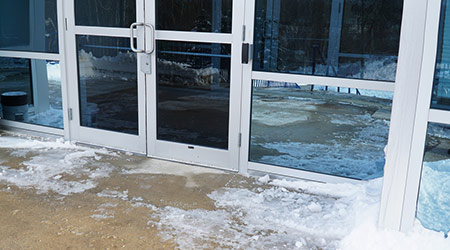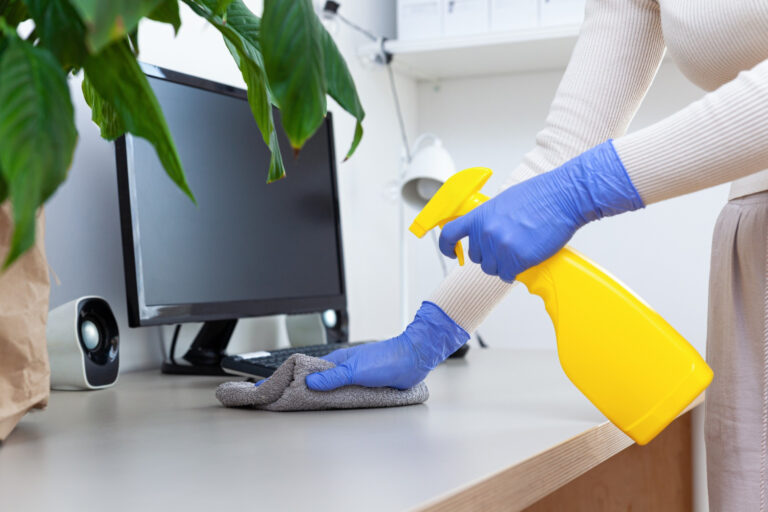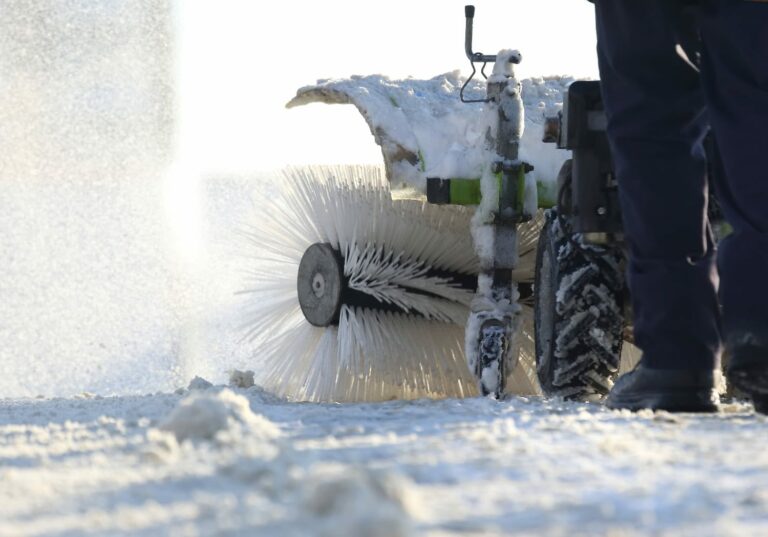From: CASE STUDY: Protecting Floors From Winter Elements, Clean Link


Ice melt products used in parking lots and on sidewalks are designed to help building owners and managers keep their facilities safe. And these products are especially needed in fast food and quick service restaurants, where people are coming in and going out throughout the day.
But, ice melt can play havoc on indoor floors. In fact, some fast food restaurants would prefer not to use ice melt at all. But slips and falls present such a huge liability issue for them, most owners and managers realize they have no choice but to use it.
About that “havoc” on floors, we must remember that most ice melt products contain calcium and magnesium chloride, a type of salt that can leave an oily and/or powdery residue on floors as it builds up.
It can also damage natural hardwood floors and eat away at the finish on tile and other types of hard surface floors. If ice melt works its way into the grout and underneath the floor, it can damage the grout and the adhesive holding the tiles may weaken. In such cases, the floor may need to be repaired.
If that was not enough, things get even worse when ice melt is placed around a busy fast food restaurant located in a heavily industrialized area. Then the ice melt not only can damage the floor, but because it is mixed with mud, grease, and oil, that “havoc” on floors can be even worse.
This is precisely what was happening in a Canadian quick service restaurant. According to Patricia Brière, a territory manager for Avmor, manufacturer of professional cleaning solutions, this facility was very busy and located in one of Quebec’s major industrial areas.
“The [quick service restaurant] manager had tried everything, but it reached a point where the floor looked like it had become permanently discolored,” says Brière. “And making matters worse, this was a ‘corporate store.’ It was where new hires were trained how to work in a quick service location as well as how to keep it clean.”
Brière says they tried a few different ways to clean the floor and remove the soiling, even scrubbing the floor with powerful degreasers. However, what proved most effective was a product manufactured by Avmor called EP88 Caprice.
EP88 neutralizes ice melt so that it no longer eats away at floors and a floor’s finish. “But it does more than this,” says Brière. “It actually lifts soils and the ice melt residue from the floor. This way, it can be simply mopped away.”
The product was tested in different sections of the quick service restaurant’s floor.
While it is recommended that it be left to “dwell” on the floor for five minutes, “in most cases, we just didn’t have the time. The restaurant was too busy,” says Brière. “But even without the dwell time, the floors still came out amazingly clean.”
Brière also mentioned that she has demonstrated EP88 on carpet with similar cleaning results. “We just spray it on the carpet, wait a couple of minutes, and then go over the area with a [carpet] extractor. The customer is always surprised at how clean the carpet is after using EP88.”

